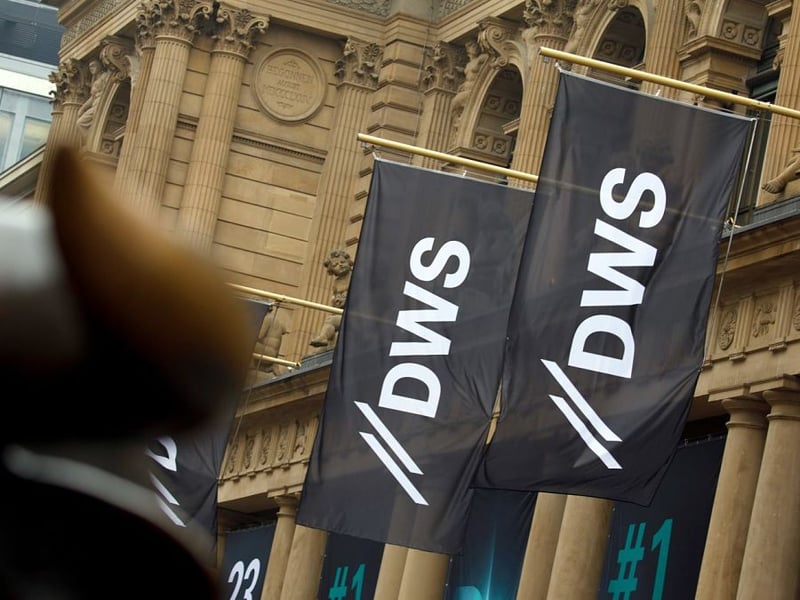

The biggest US ETF launch ever happened Wednesday, and while it was for an ESG-themed product, the $2 billion in raked in isn’t a verdict on demand for sustainable investments.
That fund, DWS’ Xtrackers MSCI USA Climate Action Equity ETF (USCA), saw a massive investment from Ilmarinen, which Deutsche noted is Finland’s largest private earnings-related pension insurance company. But that $2 billion also came at the cost of another DWS fund — the Xtrackers MSCI USA ESG Leaders Equity ETF (USSG), from which Ilmarinen pulled assets.
The new ETF focuses on climate more specifically than USSG, and it has a lower cost, at 7 basis points versus 10 bps. As of Tuesday, USSG represented $3.2 billion in assets.
Ilmarinen had invested significantly in USSG since 2019 but has recently changed a benchmark, which prompted the switch, said Arne Noack, head of systematic investment solutions for the Americas at DWS Group.
“Since then, they have refined their approach to ESG investing,” Noack said. “They have decided from a strategy standpoint to focus on carbon and climate topics.”
Other big investors could similarly be changing their ESG focus by adopting more of a tilt toward climate change, said Todd Rosenbluth, head of research at VettaFi.
“The insurance company is targeting their exposure toward climate and an environmental focus,” he said. “We are likely to continue to see that, because climate change is such a high priority for many companies.”
The ETF debut follows a short period of high redemptions from another sustainable ETF, the iShares ESG Aware MSCI USA ETF (ESGU), which has received much attention. However, money flowed out of that ETF, and toward the iShares MSCI USA Quality Factor ETF, amid model portfolio changes at BlackRock that appeared to address risks related to the banking system.
Excluding the big outflows from ESGU, net sales for all U.S. sustainable mutual funds and ETFs were slightly positive during the first quarter, according to data from Morningstar Direct.
“There is perception that money is going to continue to move out of U.S. listed ESG ETFs, that even the institutions that had confidence in this space and wanted to get targeted exposure might move on,” Rosenbluth said. “The fact that this is money moving from one ETF that fits into the ESG bucket into another … [shows] stability.”
Previously, the record for first-day inflows for an ETF was more than $1 billion, set in April 2021 by BlackRock US Carbon Transition Readiness ETF, Alyssa Stankiewicz, associate director of sustainability research at Morningstar, said in a statement. Early sales of that ETF reflected a move by institutional investors including the California State Teachers Retirement System, Rosenbluth noted.
“Climate action emerged a few years ago as an in-demand theme within sustainable investing, and it appears to have some staying power within the space,” Stankiewicz said.
DWS also sees a future in sustainable investing in the U.S. Currently, the firm has more than two dozen Xtrackers ETFs with an ESG focus, and it recently filed prospectuses with the Securities and Exchange Commission for three others — the Xtrackers US Green Infrastructure Select Equity, Cybersecurity Select Equity and Semiconductor Select Equity ETFs. Those ETFs could go live as soon as May 25, according to the filing.
An indication of the demand for sustainable investing in the U.S. was the $90 million in sales that another product, the Xtrackers Net Zero Pathway Paris Aligned US Equity ETF, saw last year, Noack said.
“We were able to gather interest in that,” he said. However, “showing a $2 billion AUM on the climate action index, we fully expect that to capture the attention of a meaningful number of institutional investors globally.”

Relationships are key to our business but advisors are often slow to engage in specific activities designed to foster them.

Whichever path you go down, act now while you're still in control.

Pro-bitcoin professionals, however, say the cryptocurrency has ushered in change.

“LPL has evolved significantly over the last decade and still wants to scale up,” says one industry executive.

Survey findings from the Nationwide Retirement Institute offers pearls of planning wisdom from 60- to 65-year-olds, as well as insights into concerns.
Streamline your outreach with Aidentified's AI-driven solutions
This season’s market volatility: Positioning for rate relief, income growth and the AI rebound
